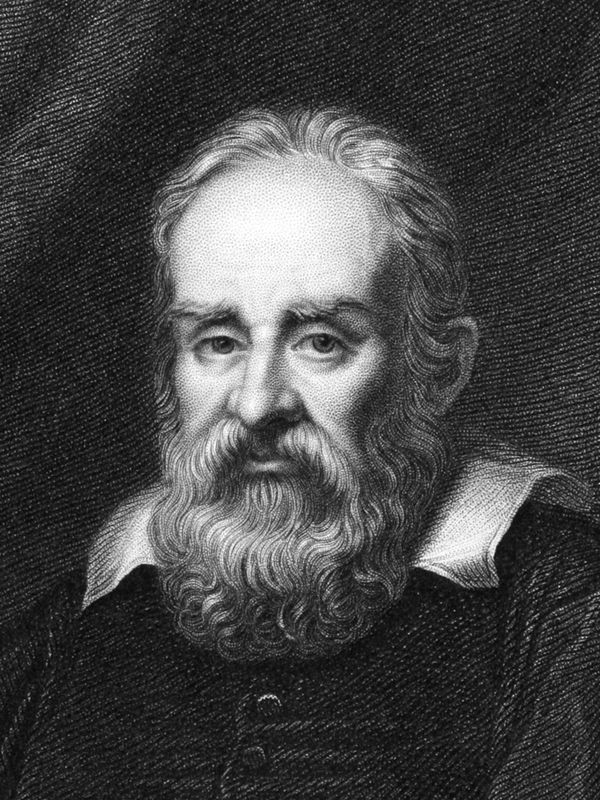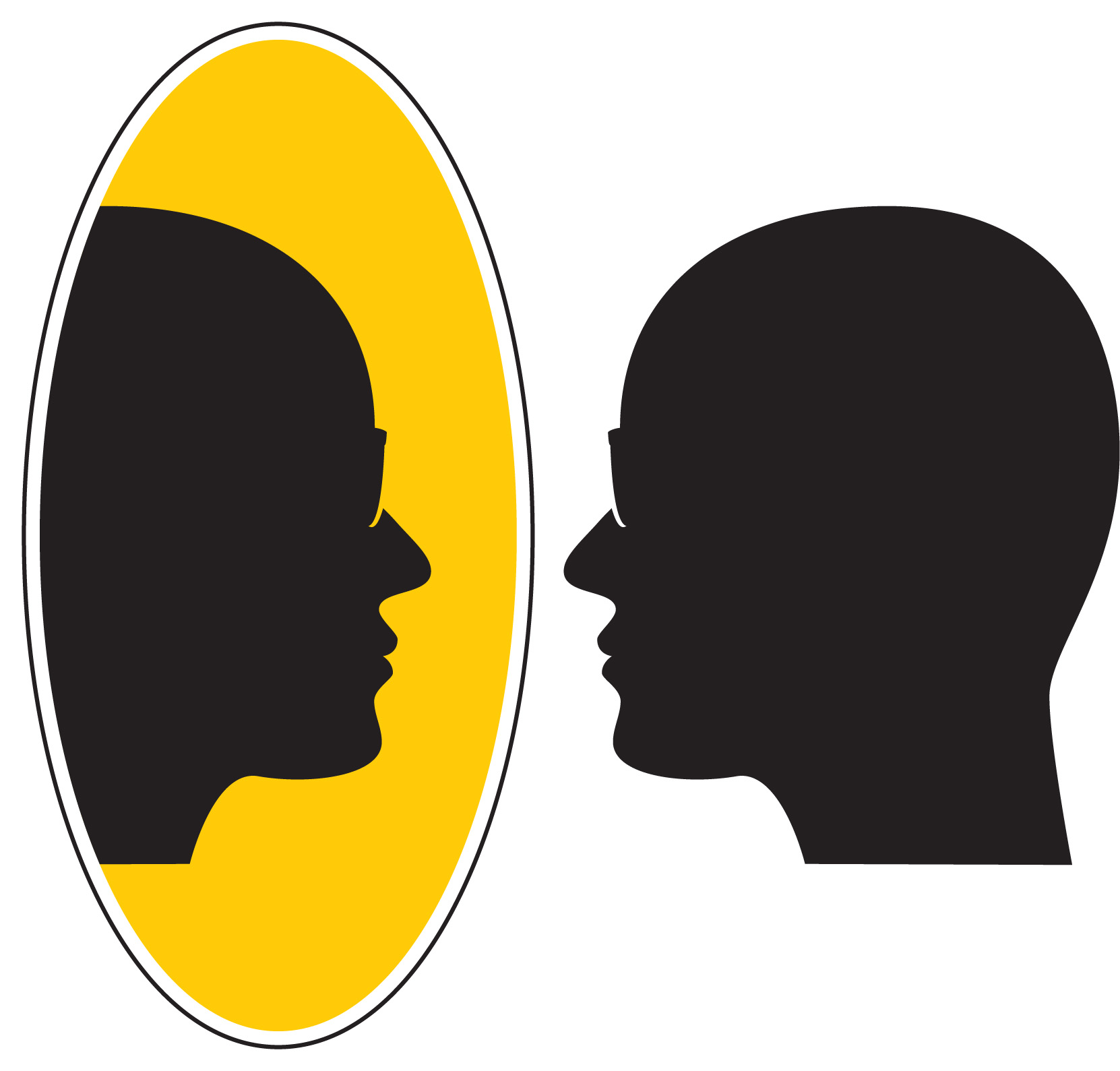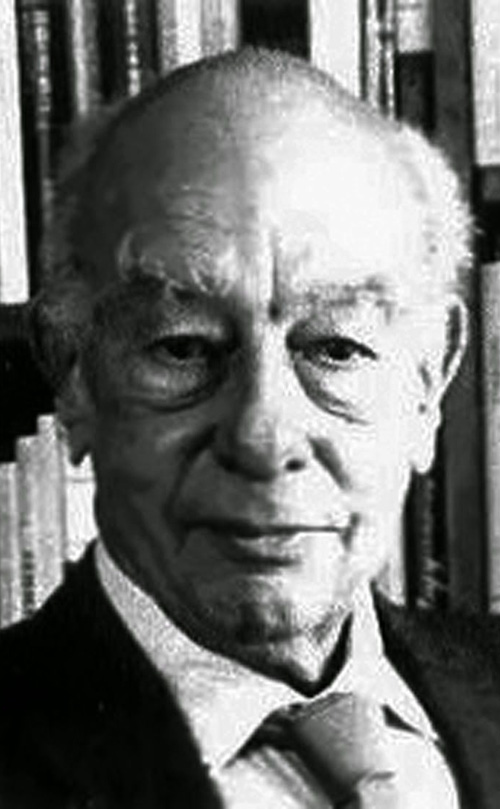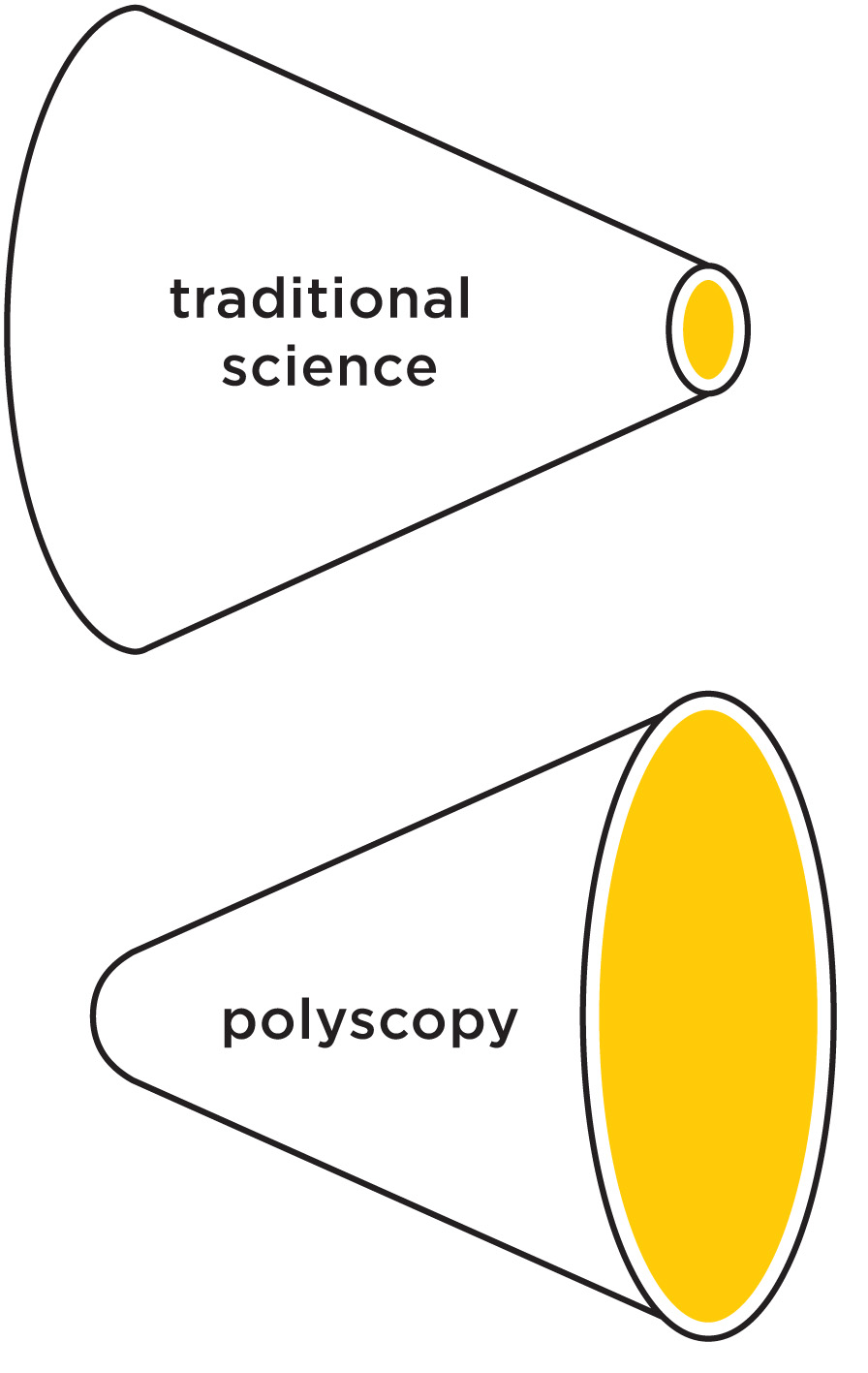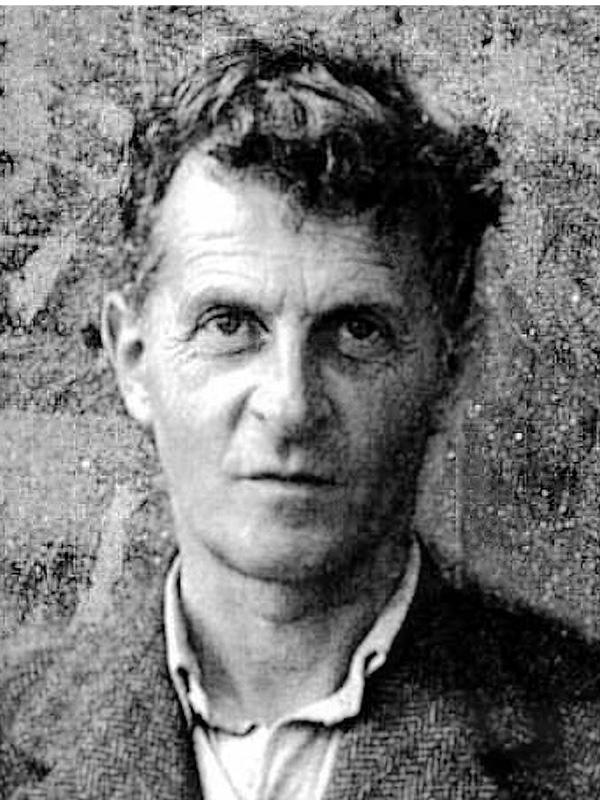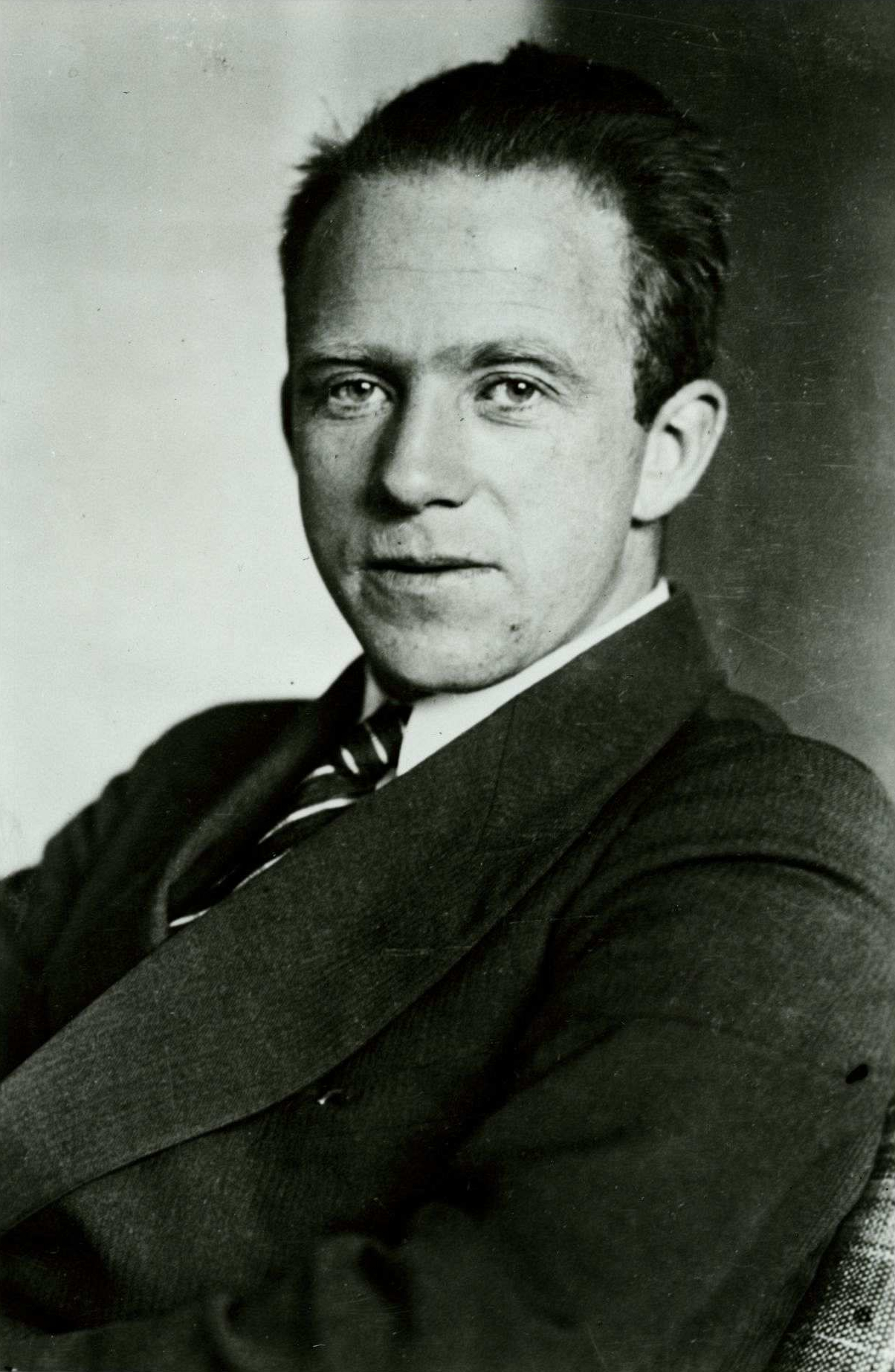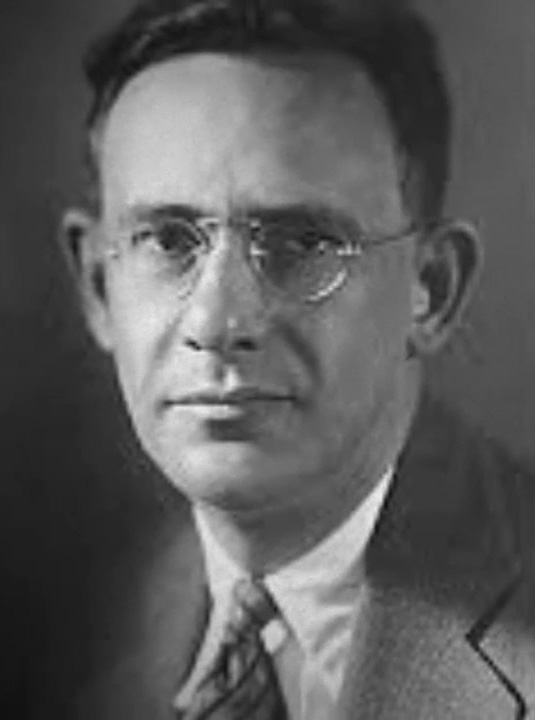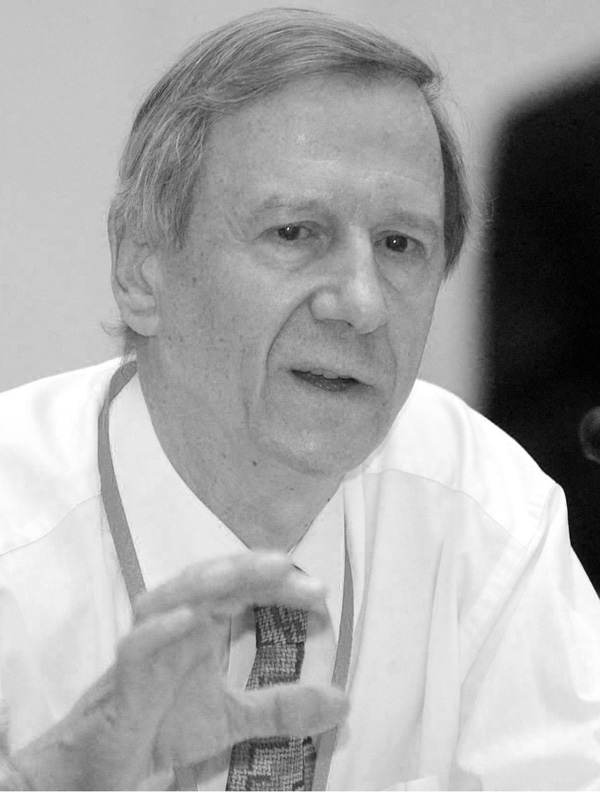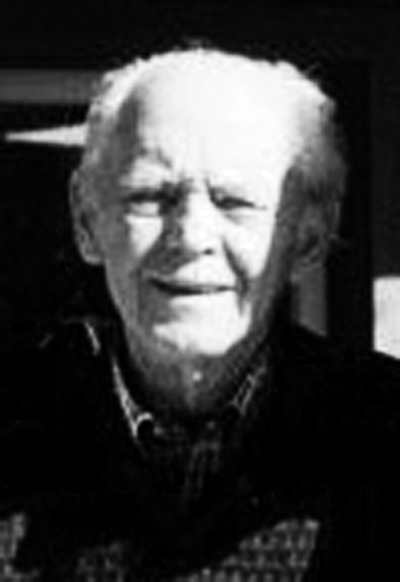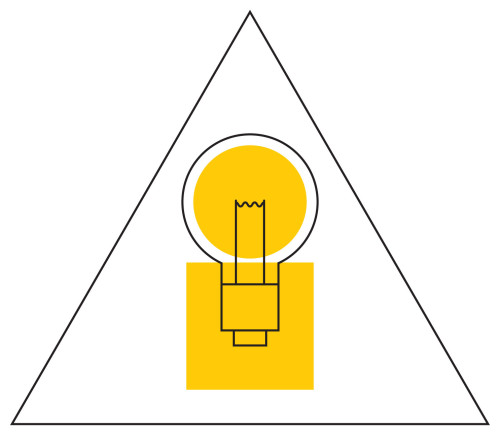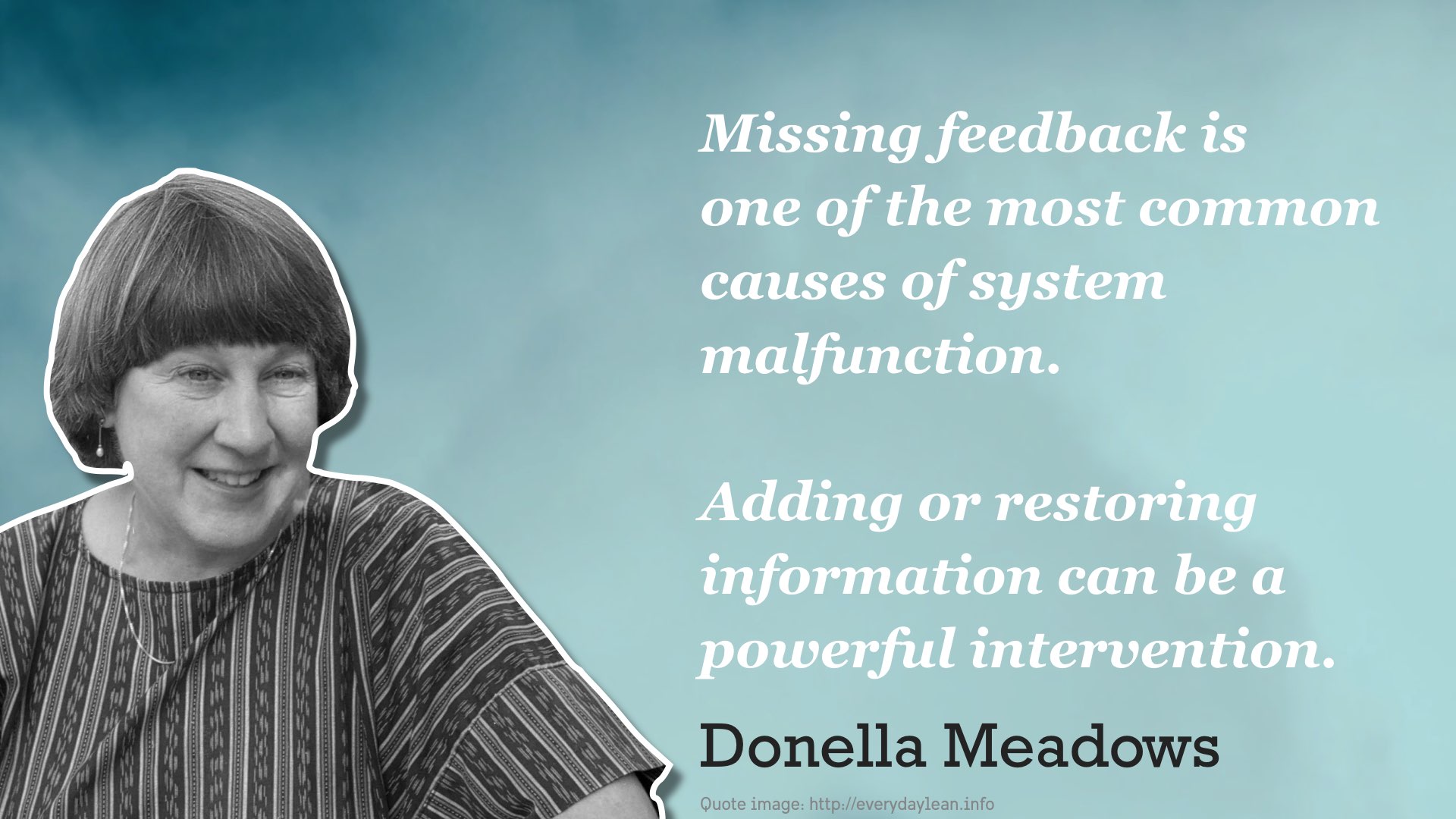IMAGES
Contents
- 1 Federation through Images
- 1.1 Not all images are worth one thousand words.
- 1.2 – Eppur si muove!
- 1.3 Our ideas of what constitutes "good" knowledge and "good" academic work, which have been evolving since antiquity, during the past century underwent a thorough revision.
- 1.4 – On every university campus there is a Mirror.
- 1.5 – Physical concepts are free creations of the human mind, and are not, however it may seem, uniquely determined by the external world.
- 1.6 – [The] flow from the theoretical to the conventional is an adjunct of progress in the logical foundations of any science.
- 1.7 An up-to-date foundation for creating truth and meaning can be developed by relying on truth by convention.
- 1.8 We can liberate ourselves from disciplinary straitjackets.
- 1.9 We can broaden the scientific method; we can make it applicable to any question or issue.
- 1.10 – I see on the one side the totality of sense experiences and, on the other, the totality of the concepts and propositions that are laid down in books.
- 1.11 – Whereof one cannot speak, thereof one must be silent.
- 1.12 – The nineteenth century developed an extremely rigid frame for natural science which formed not only science but also the general outlook of great masses of people.
- 1.13 – It needs but half an eye to see in these latter days that science, the Grand Revelator of modern Western culture, has reached, without having intended to, a frontier.
- 1.14 – The objective of studies needs to be to direct the mind so that it brings solid and true judgments about everything that presents itself to it.
- 1.15 Knowledge can grow upward.
- 1.16 – Enough of this. Newton, forgive me...
- 1.17 Why knowledge grows downward
- 1.18 Why knowledge must grow upward
- 1.19 Our needs have changed.
- 1.20 How to help knowledge grow up.
- 1.21 Knowledge must inform and orient our choices.
- 1.22 – It is absolutely necessary to find a way to change course.
- 1.23 – The task is nothing less than to build a new society and new institutions for it.
- 1.24 – We are riding a common economic-political vehicle....
- 1.25 – We are the first generation of our species that has the privilege, the opportunity, and the burden of responsibility to engage in the process of our own evolution.
- 1.26 We can reinvent the light bulb.
- 1.27 We can redirect the pursuit of happiness.
- 1.28 The mindset or paradigm out of which the system arises is the most impactful way to intervene.
- 1.29 See
- 1.30
- 1.31
Federation through Images
Not all images are worth one thousand words.
But the ideograms are! They play a similar role in knowledge federation as mathematical formulas do in traditional science. An ideogram can condense a wealth of insights and many pages of text into an image whose message can be recognized at a glance. Recall the Newton's formula, or Einstein's ubiquitous E=mc² – those too are ideograms! But the possibilities behind the ideographic approach are endless and vastly surpass the conventional maths. Those possibilities vastly surpass also our illustrations; they are yet to be developed through creative use of new media.
– Eppur si muove!
Be aware that what we are talking about is not at all "of philosophical interest" (only). To see why, think about the world of the Late Middle Ages: never-ending wars, horrifying epidemics, infamous Inquisition trials... It appeared that the end of the world was near. Bring to mind the iconic image of Galilei in house prison, a century after Copernicus, whispering "Eppur si muove!" into his beard. The problems of the day were not solved by focusing on those problems, but by a slow and steady development of a whole new approach to knowledge. Several centuries of unprecedented progress followed. Could a similar advent be in store for us today?
Our ideas of what constitutes "good" knowledge and "good" academic work, which have been evolving since antiquity, during the past century underwent a thorough revision.
No rational person will claim that knowledge should not be useful. And yet there are good reasons why practical skills such as cooking and automobile repair have not been admitted to the university. (At the University of Oslo, where this website is hosted, even design and architecture have not been allowed to enter.) Since antiquity our ideas of what constitutes good knowledge and good knowledge work have been evolving, and they now find their foremost expression in science and philosophy.
Let us briefly revisit our conventional approach: To obtain an academic license, we are disciplined to adhere to the language and the methods of an established academic discipline (by becoming "philosophy doctors"). We are then instructed to look at the world with the attitude of impartial, disinterested or "objective" observers. The rationale is that we then become able to depict the world as it truly is.
We are about to see that the 20th century developments in science and philosophy point to a possibility for entirely new academic standards of value and excellence. When lifted up from the sea of glut and combined together, those vital new insights empower a new approach to truth and meaning – which is both solidly and rigorously founded and attuned to contemporary needs of people and society.
– On every university campus there is a Mirror.
We use the metaphor of the magical mirror (or more simply and humbly just "Mirror") to mark the entry point to an emerging and vibrantly novel approach to knowledge (which we may also call a paradigm, an alternate academic reality, a creative frontier, or a way to create truth and meaning). "When we see ourselves in the Mirror", reads the explanation of this ideogram, "we see the same world that we see around us. But we also see ourselves in the world. We then realize that we are not the objective observes we believed we were. We are in the world! When we see ourselves in the Mirror, we recognize that it is us, humans, who have created the scientific method and the ethos of the disciplines. And that it is us, academics, who are creating the world we see around us, by looking at it in a certain way, and by instructing others to see it in that way." When we see ourselves in the Mirror, we begin to feel responsible for the world – for the way we look at the world.
As the case is in Louis Carroll's familiar story from which the mirror metaphor has been borrowed, it is possible to walk right through the magical mirror. And when one does, one finds himself in an entirely different academic reality. As in the story, this new reality is in a number of ways a reverse image of the reality we've grown accustomed to.
Knowledge federation is a model or a prototype of that new creative reality.
– Physical concepts are free creations of the human mind, and are not, however it may seem, uniquely determined by the external world.
There are far too many giants on whose shoulders we might want to stand to more clearly see the Mirror. Hence we here represent them by a single one, Albert Einstein. Also elsewhere on these pages Einstein appears in the role of an icon, representing "modern science". "Physical concepts are free creations of the human mind, and are not, however it may seem, uniquely determined by the external world," Einstein and Infeld wrote in Evolution of Physics. "In our endeavor to understand reality we are somewhat like a man trying to understand the mechanism of a closed watch. He sees the face and the moving hands, even hears its ticking, but he has no way of opening the case. If he is ingenious he may form some picture of a mechanism which could be responsible for all the things he observes, but he may never be quite sure his picture is the only one which could explain his observations. He will never be able to compare his picture with the real mechanism and he cannot even imagine the possibility or the meaning of such a comparison."
What we've just seen was 'modern science' telling us that "correspondence with reality" is a criterion that cannot be verified. What we're about to see next is 'modern science' telling us that the common conviction that our ideas correspond with reality is a common result of illusion: "During philosophy’s childhood it was rather generally believed that it is possible to find everything which can be known by means of mere reflection. (...) Someone, indeed, might even raise the question whether, without something of this illusion, anything really great can be achieved in the realm of philosophical thought – but we do not wish to ask this question. This more aristocratic illusion concerning the unlimited penetrative power of thought has as its counterpart the more plebeian illusion of naïve realism, according to which things “are” as they are perceived by us through our senses. This illusion dominates the daily life of men and animals; it is also the point of departure in all the sciences, especially of the natural sciences.”
If our aim is to distinguish what is "really true" from illusion – how can we rely on a criterion that is impossible to verify? And which is itself a result of illusion?
– [The] flow from the theoretical to the conventional is an adjunct of progress in the logical foundations of any science.
"We are not discovering an objectively true picture of reality. We are constructing (an approximate representation of) reality". This conclusion, which we are calling the constructivist credo, follows from the results reached in a broad variety of disciplines (physics, biology of perception, cognitive science, linguistics, sociology, philosophy...). It is also an epistemological position that was upheld explicitly or implicitly by the 20th century's giants.
This epistemological position has a problem. When the constructivist credo is placed into a system of thought where "truth" means "correspondence with reality", and where each statement is supposed to be about reality, the result is a paradox.
But there is a solution. It is what Willard Van Orman Quine called truth by convention. Truth by convention is the kind of truth that is common in mathematics: "Let x be... Then..." It is meaningless to ask whether x "really is" as stated. In "Truth by Convention", Quine argued that "every science" progresses from an assumption of mutual understanding and of the reality of shared concepts, to realizing that this assumption does not hold, and then resorting to explicit definition by convention.
So why not allow the creation of truth and meaning in general to progress similarly?
An up-to-date foundation for creating truth and meaning can be developed by relying on truth by convention.
A practical way to do that is to spell out the rules – specify the underlying assumptions by stating them as a convention. We call such a convention a methodology. We have done the exercise; the result is a prototype called Polyscopic Modeling. The knowledge work (epistemology, methods, information formats, results, insights...) that results from applying this methodology we called polyscopy. We often use this shorter and simpler keyword also for the methodology itself.
You may now imagine knowledge federation as a liberated academic territory, which is made available and at the same time separated from the conventional academic reality by the metaphorical Mirror. By stepping through, we are liberated from the reification that "science" means what the scientists have been doing for centuries. Science has acquired a pivotal role in our society, of providing reliable and relied on or "good" knowledge. And even of defining for us what "good" knowledge is. Just as our great predecessor did, who made science great, on the other side of the Mirror we are invited to revisit those core questions and find new answers – by weaving together the new fundamental insights, new societal needs and the new capabilities of information technology.
As a prototype or model of the academic or more generally creative frontier on the other side of the Mirror, knowledge federation will serve us to point to the frontier, strike a conversation about the future of knowledge and of creative work in general, and initiate real-life developments. Knowledge Federation is a prototype of a new institution, the transdiscipline, which is capable of developing the knowledge federation praxis. The task of Knowledge Federation is to add to the conventional creative work the capability to re-create itself.
We can liberate ourselves from disciplinary straitjackets.
The first reversal on the other side of the metaphorical Mirror is of the way the language and the method are understood and handled.
This reversal is so germane to polyscopy that we are calling the ideogram that represents it the Polyscopy ideogram. Our design team simplified this ideogram by deleting the eye that was originally on the left-hand side of each of the conic tubes, to suggest that they represent "ways of looking" or scopes. The idea, represented by the ideogram, is that when we've identified the language and methods of scientific disciplines as something that limits what we are able to see, it becomes natural to make adjustments so that we may see more, and see what needs to be seen. In the creative space on the other side of the Mirror, this is enabled by allowing for the concepts and methods, and even for the fundamental assumptions and values which orient and determine what we do, to be defined by convention.
This reversal empowers us to once again be creative on the level on which the great forefathers of science were creative – instead of turning their methods into an orthodoxy, and repeating them forever.
Polyscopy reverses even the very meaning of information. If we are not claiming the reality of our models – then what is is really that we are saying, by making a statement or a claim? The answer is that those are scopes – ways of looking, which we share with one another to see more and better. And ultimately to see what needs to be seen.
The reversal pointed to by the Polyscopy ideogram includes even the very attitude we have toward claims and ideas. Instead of rejecting whatever fails to agree with our dominant worldview, instead of devising ways to convince or coerce the trespassers, our attitude conforms to the new ethical doex of the dialog: We suspend judgement and keep at bay own propensity to reject and criticize. On the other side of the Mirror crusading for a single worldview is understood as an impediment to both communication and creativity. Our propensity to be exclusive about our worldview is readily seen as a product of our socialization. Hence we do our best to see things in the way that's been offered, through the offered scope.
We can broaden the scientific method; we can make it applicable to any question or issue.
In polyscopy the terms of the language can be freely – yet rigorously and precisely – created by convention. We call them keywords. When we want to emphasize that a concept is intended to be interpreted as defined, we italicize it. This enables us to create precise and even rigorous ways to look at any chosen subject. We not only do not impose our way of looking at things, but we indeed consider it an obligation, and an integral part of the ethos of communication, to explain or justify the scope (why have we chosen to look at the given theme, and why in exactly that specific way or ways). The rationale is that less relevant themes and ways of looking should not take away the attention from the more relevant ones.
The Polyscopic Modeling methodology is conceived as a prototype of a general-purpose methodology – it allows us to create or federate insights and ideas about any subject, and at any level of generality or abstraction. Instead of choosing our subject of study according to the habitual areas of interest and language and method of a discipline, we become free to direct our attention and to prioritize our interests by other concern, notably by their relevance to knowledge work, and to society. What new themes, what types of insights and results are thereby made possible? The polyscopy prototype elaborates the various consequences of this more creative and more responsible or responsive approach to creative work in quite a bit of detail.
Similarly, knowledge federation is conceived as a set of technologies and technology-enabled social processes that allow even contradictory ideas to co-exist in the same knowledge-work space. As a prototype, it is a continuously evolving set of practices and social processes, which amount to "collective thinking". The veracity, relevance and compatibility of the stated ideas are continuously brought into relationships, re-evaluated and re-negotiated.
– I see on the one side the totality of sense experiences and, on the other, the totality of the concepts and propositions that are laid down in books.
Turning now to the giants whose insights might justify and legitimize this reversal, we once again find too many. We represent them by four, and we weave their statements together so that some of the core sides of this all-important and complex issue are at least touched upon. And yes – we add to them a fifth observation of a giant as an epitaph and a curiosity.
“I shall not hesitate to state here in a few sentences my epistemological credo." It is significant that this sentence appears in the introductory part of Einstein's Autobiographical Notes. By stating explicitly his "epistemological credo", Einstein did exactly what we are advocating – he spelled out the fundamental assumptions, he did not take them for granted. And he also prepared the ground for explaining his own contributions, and for the development of modern physics, because in subtle yet crucial ways their very point of departure was to challenge the age-old "epistemological credo" of traditional physics.
Einstein explains that this "epistemological credo" is not what he had at the beginning of his career, but rather something that was shaped by his later experiences as a scientist. He then continues: "I see on the one side the totality of sense experiences and, on the other, the totality of the concepts and propositions that are laid down in books. (…) The system of concepts is a creation of man, together with the rules of syntax, which constitute the structure of the conceptual system. (…) All concepts, even those closest to experience, are from the point of view of logic freely chosen posits, just as is the concept of causality, which was the point of departure for this inquiry in the first place.”
The point of departure of polyscopy is to turn this very "epistemological credo" into a convention. Why? Because it is by spelling out the underlying assumptions that we can create a solid basis for changing the rules, the values and the practices as well. And also because by making experience rather than "reality" (as "reflected" by the repertoire of results in the traditional sciences) be the ultimate ground on which the veracity and the value of an insight will rely, we become able to "prove" (or as we prefer to say) justify models in all walks of life – by showing that they are consistent with human experience. And experience can – and does – take very many forms. All of them count. The procedure (whose details are provided in the documents linked below) for establishing a claim as trustworthy or "true" is a combination of the traditional scientific method and the trial by jury. As the experience with polyscopy shows, this democratizes the truth and meaning profoundly, and opens up to some most interesting cultural and other consequences – ultimately enabling us to aim toward the large and sweeping societal paradigm shift.
– Whereof one cannot speak, thereof one must be silent.
We've seen it written that all of philosophy had been footnotes to Plato – and then came Wittgenstein... Wittgenstein is a natural icon for the philosophy's view of the point we are making here, that language imposes restrictions on communication. Although the quoted statement is from the Tractacus, which Wittgenstein later disclaimed, we share it here as an ideographic summary of his Philosophical Investigations as well. By describing the "language games" (masons passing to one another commands from the limited range including "block", "pillar", "slab" and "beam") Wittgenstein pointed to the intrinsic limitations which philosophy may share with science and with any other generalization – when the words we use to generalize or "philosophize" are 'lifted up' from the social context where they originated, they tend to lose their original meaning. They no longer make a well-defined sense! It would appear that we cannot really communicate at all outside of the traditional 'language games' – which might well mean that we cannot deliberately and consciously find a way out of the existing paradigm and begin a new one. But fortunately there's a way out, as we have seen – the truth by convention, or scope design as polyscopy has been calling it.
– The nineteenth century developed an extremely rigid frame for natural science which formed not only science but also the general outlook of great masses of people.
In his 1958 book-essay "Physics and Philosophy" Werner Heisenberg explains how "The nineteenth century developed an extremely rigid frame for natural science which formed not only science but also the general outlook of great masses of people. (...) This frame was so narrow and rigid that it was difficult to find a place in it for many concepts of our language that had always belonged to its very substance, for instance, the concepts of mind, of the human soul, or of life." The entire monograph is an historical account explaining how this worldview become dominant, and how the modern physics rigorously disproved it. Heisenberg concludes that "one may say that the most important change brought about by the results of modern physics consists in the dissolution of this rigid frame of concepts of the nineteenth century".
The most important change? Heisenberg is not talking only about the limitations of the scientific language (however important the language might be), but about the evolution of our culture, including our values and way of being in the world – which of course determine the course our civilization has taken, and our future. We have made an error, says Heisenberg, in spite of our best intentions, and for understandable and justifiable reasons. We have given the people a narrow, excluding worldview that damaged some of the most vital parts of our culture. Fortunately, we are now in the position to correct that error, because science has discovered the error, it has proven that "the rigid frame" was wrong.
Let us highlight here what may be obvious, because this consequence of Heisenberg's 1958 insight is far too important to be missed: We have an obligation to correct this error.
– It needs but half an eye to see in these latter days that science, the Grand Revelator of modern Western culture, has reached, without having intended to, a frontier.
Benjamin Lee Whorf diagnosed the resulting situation as follows (already in the 1940s!): "It needs but half an eye to see in these latter days that science, the Grand Revelator of modern Western culture, has reached, without having intended to, a frontier. Either it must bury its dead, close its ranks, and go forward into a landscape of increasing strangeness, replete with things shocking to a culture-trammelled understanding, or it must become, in Claude Houghton’s expressive phrase, the plagiarist of its own past."
This brief diagnosis by this visionary thinker hardly needs interpretation. It does, however, merit a moment of reflection, to digest the nuances it is pointing to – and we encourage the reader to pause and honor this opportunity.
– The objective of studies needs to be to direct the mind so that it brings solid and true judgments about everything that presents itself to it.
René Descartes is often "credited" as the philosophical father of the limiting (reductionistic) side of science. This Rule 1 from his manuscript "Rules for the Direction of the Mind" (unfinished during his lifetime and published posthumously) shows that even Descartes might have rather be remembered as a supporter of polyscopy.
Knowledge can grow upward.
The second reversal is of the direction in which knowledge is growing.
The vertical axis and the direction "up" have a distinguished role in polyscopy. The direction "up" symbolizes what is technically called "vertical abstraction". A characteristic result of pursuing this direction is a general insight, principle, rule of thumb... Think of walking up a mountain. What we see down below is the forests, but not the trees. From this venture point we become able to see where the ways are leading to, and choose the one we might want to follow. Later, when we descend from the mountain, we acquire again the more detailed view, which we need to be able to navigate the chosen way.
The Science on a Crossroads ideogram depicts the point when it was understood that the Newton's concepts and "laws" were not a discovery of the inner workings of nature, but his own creation and an approximation. Two directions of development opened up to science. One direction was to to develop science "downward" – away from daily-life and even intuitive concepts and concerns, and toward greater rigor, precision and detail. The other direction, "upward", was to do in all walks of life what Newton did in physics – create approximate but precise enough concepts and models, which can vastly improve our understanding of new issues, and suitably redirect our action. The sequence of scientists "converging to zero" in the ideogram is there to indicate that only the former option was followed. And that the result of pursuing this direction "to the limit" was that both science and scientists became 'smaller'.
– Enough of this. Newton, forgive me...
Here a single text will provide sufficient illustration and support – Einstein's "Autobiographical Notes". In a similar way as Heisenberg does in Physics and Philosophy, Einstein first describes the successes of science that resulted by following the classical or Newton's way. Then he points to the discrepancies or anomalies, the phenomena that could not be explained in that way, and that needed completely new thinking. Then he concludes: "Enough of this. Newton, forgive me; you found just about the only way possible in your age for a man of highest reasoning and creative power. The concepts that you created are even today still guiding our thinking in physics, although we now know that they will have to be replaced by others further removed from the sphere of immediate experience, if we aim at a profounder understanding of relationships."
Why knowledge grows downward
Observe that "up" is a good and natural direction of growth for knowledge as well – toward insight, wisdom, general principle that cover many specific cases... Notice that this – the capability to formulate such principles – was what made science great, what gave it the high esteem we scientists now enjoy. It was why scientific knowledge was accepted as the standard of good knowledge. How in the world did this get reversed?
A long story made very short (but the long story is important, and we offer it to this conversation it in the documents pointed to below) – the answer must be sought in the peculiar way in which science federates knowledge. Indeed, the traditional science too may be understood as a specific way to federate knowledge – by completing a coherent representation of the basic mechanism of nature, how it all works, and by explaining how the observed phenomena follow as a consequence. This approach, this way of exploring the world, was initially so successful, that it naturally acquired a highest status and became standard! But then something unexpected happened! The insight that compelled an impressive array of giants to speak out (Einstein in Autobiographical Notes; Heisenberg in Physics and Philosophy; Oppenheimer in Uncommon Sense; Feynman in The Character of Physical Law...) – is that the results of this approach to truth and knowledge were sufficiently developed, the result was a disproof of the original assumptions.
Why knowledge must grow upward
There are three kinds of disadvantages of the traditional-scientific approach to knowledge (federation):
- Evidence goes against the assumption that the underlying model will eventually be completed (there are good reasons to believe that it cannot). Let's leave a proper analysis for another occasion and provide only two hints: (1) the nature is not a mechanism (that's essentially the message that modern physics has given us...); (2) the splitting of the atom is a good metaphor for this situation: the etymological meaning of "atom" is "indivisible" – it was supposed to be the ultimate particle of matter in terms of which the larger things could be described. So when the molecules and atoms were scientifically discovered, the scientists naturally said "well, here it is!" But the atom did get divided – first into electrons, protons and neutrons, and with time into more than one hundred "subatomic particles". Today the atom is Humpty Dumpty that nobody can put back together again... Our causal explanation of "how it all works" turned out to be retreating downwards, just when it appeared to be within our grip...
- The second reason is complexity – understood now in several ways including complex dynamic systems, computational complexity... The point here is that even if we could create a complete model, the interesting consequences would not follow from it; they would probably not even be computable from its mathematical description.
- And finally and most importantly – the knowledge we now most urgently and even vitally need is not at all of the "how it all works" kind; and this knowledge will not come into being even if we did find a complete representation of how it all works, and computed its consequences...
Revisiting Einstein's Autobiographical Notes will give us some additional insights. Einstein describes how the classical science, and specifically the Newton's Laws, turned out to be so successful in explaining the natural phenomena, that it became natural to believe that all of nature would soon be understood in a similarly clear and predictable way, just as we might understand the workings of a clockwork. And when it turned out that the things were not at all that simple, at that point the division and organization of the academic or more generally creative work had already taken place. Einstein, naturally, considered himself "a physicist". Following the other direction was nobody's job!
Notice that what we are talking about is not only a matter of high practical importance, but also a deeper issue of the academic self-perception and self-identity, which is the core theme pointed to by the Mirror. At this deeper level, those two directions of growth represent two ways of defining what "good" knowledge and "good" knowledge work represent. One means doing what Newton did – namely modeling physical phenomena in terms of "physics concepts" such as mass, velocity etc. The other means allowing ourselves to do as Newton did – and create concepts and methods to model, approximately but precisely enough, whatever under the Sun may need our (that is, people's) attention and understanding.
Our needs have changed.
It is time now to put on our map another category of giants – the ones from the humanities. Let them here, for now, be represented by Anthony Giddens, and more specifically by his keyword "reflexive modernity". The point will be that our society is changing and has already changed. And that in this new situation solid, explicit knowledge on which we could rely to understand situations and issues, has now a key role that was not there previously. Here are some comments of Giddens' work we found on the Web: "It is important for understanding Giddens to note his interest in the increasingly post-traditional nature of society. When tradition dominates, individual actions do not have to be analysed and thought about so much, because choices are already prescribed by the traditions and customs. [...]. In post-traditional times, however, [...] all questions of how to behave in society [...] become matters which we have to consider and make decisions about. Society becomes much more reflexive and aware of its own precariously constructed state. Giddens is fascinated by the growing amounts of reflexivity in all aspects of society, from formal government at one end of the scale to intimate sexual relationships at the other."
How to help knowledge grow up.
A short answer is this whole website. Polyscopy shows how "the scientific method" may be suitably turned into something that preserves its advantages, while enabling the creation of high-level insights and results in any area of interest. Similarly the knowledge federation prototypes "the whole thing", including the social processes and technology. The Knowledge Federation transdiscipline prototype models the academic institution capable of federating knowledge according to contemporary interests and epistemological state of the art.
But this whole page is largely a hint, which attempts to be sufficiently detailed to at least give an idea of the interesting substance. So let us do that here with polyscopy. There are several points – and we leave it as a challenge to the reader to see how all this fits into a coherent whole (a methodology, and a paradigm). (1) The stated and anyhow reasonable goal (as we shall see in more detail below) is to provide knowledge according to contemporary needs of people and society. This in itself is a reversal: Instead of believing that our highest goal, our "very best" knowledge, are facts that are "absolutely true" (which, we believe, we can achieve by adhering to the traditional-scientific procedures), we accept (make it a convention) that we the people simply need answers to certain questions. We then take it as our aim to answer those questions as well as we can – while making provisions for improving both those answers and the procedures which we use to create the answers. (2) Polyscopy enables the creation of high-level information by treating all knowledge the same: Our models are man-made "ways of looking"; and there's experience (which here is the common denominator for experience of all kinds, not only the experience that comes from a laboratory). Our aim then is to make models that in most useful ways represent what is relevant in experience. (3) Knowledge federation as a process is the social process that negotiates the meaning between different models, finds the ones that are most credible, makes sure that the insights are reaching the "cells and organs" in the "social organism" where they are needed, and that the insights are acted upon. (4) Knowledge Federation is the new institution (transdiscipline) whose job is to make sure that all this is done in a way that reflects the relevant knowledge in various fields.
Polyscopy provides a methodology, which includes suitable criteria and keywords. The notion of gestalt has here a central role. The gestalt is our interpretation of a situation (and importantly of the situation we are in), which points to a correct course of action. "Our house is on fire" is a textbook example. By definition (i.e. by convention), having a correct gestalt is what "being informed" is about. Knowledge federation provides suitable methods and social processes by which this goal can be achieved – examples of which are presented on this website. A more comprehensive account of the methods and further examples can be found in the linked documents.
Knowledge must inform and orient our choices.
The third and last reversal is of the purpose of creative work, and of the underlying valuation or epistemology.
The Modernity ideogram represents the turning point – the point of departure of the emerging paradigm. It is both an ideographic representation of a gestalt – and hence of a result; and also a definition of a new direction, a specification of an epistemology. But let's go more slowly.
First of all the characterization of the the situation we are in, the gestalt. Here we are establishing a high-level result, a gestalt. So imagine us riding at an accelerating speed through uncharted and un-illuminated terrain in that vehicle... Obviously, our situation is worse than risky... it is flagrantly un-sustainable! Sooner or later this thing is bound to crash. It's non-sustainable "by design" (that is, by its structure – and by virtue of the fact that its structure has never really been [[design|designed]! But there's a remedy! Yes, of course, it's to re-create those headlights, what we do with information and knowledge. By designing instead of inheriting what we do with information, suggests this image, we can now make the difference between a hazardous ride into the future, and using our technology to take us to places or conditions where we may justifiably wish to be. Isn't that what we've been talking all along? But there's a still deeper and subtler, more fundamental and more sweeping point. The point is... that by changing the headlights we make THE WHOLE BIG THING radically more valuable (turning it from risky, potentially a mass suicide machine, to a vehicle that can take us to places where we may reasonably want to be). Notice that when we consider the information as a commodity (as the media informing does), or when we create it within the limits of a discipline (as it is common in academic research), we are not likely to do the kind of big structural change that is suggested by the transition from the candle to the light bulb.
And then there's the epistemology, the design epistemology as we call it. Notice the good situation we are in: We have liberated ourselves from the old epistemology (where we are obliged to learn 'the technique of Old Masters' and use it to depict the world as it 'truly is' – to use a metaphor from the world of the arts, which marks the transition to "modern art"). We are in a convention-making space – we can make any convention we like about what information and knowledge are all about, and what values we want to use to esteem and prioritize knowledge work. And so what the Modernity ideogram is saying is – yes, we need to recreate those 'headlights'. That task must be given highest priority. We cannot just continue using our inherited ways... But there's a subtler and deeper message here as well – and that's the key to the new epistemology: It is that (1) information, and knowledge, have a key role to perform in our society... So we have a whole new 'puzzle' – not the traditional 'reality puzzle' of traditional disciplines, but a much more timely 'puzzle' – how to make a knowledge work that turns us into an informed society? So that the democracy may function (lead to choices and direction that are wise and beneficial). So that we may truly benefit from innovation or creative work.
There's a whole new notion of 'basic research' that follows from the new epistemology! It's to CREATE knowledge work. This means being creative on a whole new level. This also means that writing academic articles will not necessarily be THE medium... So we challenge you to stretch your categories and look at what's being presented here as basic research – the key question is what comes next in the stream of actions that leads to those 'headlights' being physically in place... We are invited to be creative in entirely new ways! MUCH freer than what's been the case on the old side of the Mirror.... And yet far more responsible...
We should say that the design epistemology is what defines our two main keywords, knowledge federation and design epistemology.
– It is absolutely necessary to find a way to change course.
And now our selected giants, who will help us 'see the light' (the bus with candle headlights). Icons only. Peccei is here the icon of (federation for) sustainability alias "world problematique".
But what could be a more natural way to "change course" than to change 'the headlights'?
– The task is nothing less than to build a new society and new institutions for it.
Erich Jantsch – the icon of [[systemic innovation|systemic innovation. We are organizing the academic space on the other side of the Mirror... So let's be careful, or academic. This matter is of no small importance... So let's envision a science – which will instruct us how to create the 'headlights'... Well the science already exists! It's cybernetics, or more generally the systems sciences... We could have brought in Norbert Wiener instead. But Jantsch must be credited for bringing the cybernetic approach in line with "sustainability" or "world problematique" – and for taking the NECESSARY STEPS to put the key systems in line. To CREATE the headlights... More about this will be said in Federation through Stories. Briefly now – the point is to add to democracy the capability to "recreate the systems in which they live and work" - as Bela Banathy phrase it.
– We are riding a common economic-political vehicle....
Engelbart is our icon of Knowledge federation. The point here is that the contemporary technology has been CREATED to enable us to replace 'candles' by 'light bulbs'. More about this in Federation through Stories.
– We are the first generation of our species that has the privilege, the opportunity, and the burden of responsibility to engage in the process of our own evolution.
"We are the first generation of our species that has the privilege, the opportunity, and the burden of responsibility to engage in the process of our own evolution. We are indeed chosen people. We let this insight of systems scientist Bela H. Banathy, from his book "Guided Evolution of Society" (published in the yr. 2000), and already the title of that book, summarize the insights of the cited and other relevant giants. Indeed this book is a result of a thorough federation! Banathy's conclusion is that we stand before a gigantic evolutionary leap, similar in size and import to the advent of the agriculture. Then we learned to cultivate our outer environment, we assumed a proactive stance toward the nature. Now we are about to learn to similarly cultivate (direct the evolution of) our cultural and social environments. "But we can fulfil this function only if we develop evolutionary competence by evolutionary learning and acquire the will and determination to engage in conscious evolution. These two are core requirements(...)."
The Modernity ideogram may just as well be interpreted as an ideogram pointing to the need to "the guided evolution of society"; the design epistemology may be understood as a way to secure the mentioned two "core requirements".
We can reinvent the light bulb.
The “i” in the above metaphorical image, composed of a circle on top of a square, renders the information that Knowledge Federation undertakes to create in a nutshell. The purpose of this information is to provide direction-setting high-level insights (represented by the circle), based on a multiplicity of lower-level insights (represented by the square), which illuminate an issue or phenomenon from multiple sides.
We can redirect the pursuit of happiness.
The explanation of the ideogram. The oldest result.
The mindset or paradigm out of which the system arises is the most impactful way to intervene.
Let us summarize our main point by hearing a lady giant – Donella Meadows.
"Folks who do systems analysis have a great belief in “leverage points.” These are places within a complex system (a corporation, an economy, a living body, a city, an ecosystem) where a small shift in one thing can produce big changes in everything." This is how the systems scientist Donella Meadows began her essay "Leverage Points: Places to Intervene in a System". Of course, as the above quotation we picked up on the Web might also suggest, the "feedback" or the information and information flow comes to mind first – and isn't that what we've been talking all along! But there's a finer and subtler point: In the list of systemic leverage points (which have often been quoted in the systems community), here is what she identifies as the most powerful: "The mindset or paradigm out of which the system — its goals, power structure, rules, its culture — arises." You will have no difficulty noticing that the specific approach to knowledge that has been outlined here has exactly that as its distinguishing characteristic. The now prevailing paradigm may well be now seen as a social creation of truth and meaning which relies on updating a paradigm – and largely ignoring or denying whatever fails to fit in. But fortunately we know – or should know – better... And so the the presented ideograms, and of course the ideas they represent, pave the way to an approach to knowledge where evolution of new ways of looking, and not fitting things into the existing way of looking and conceiving things (or paradigm) is its mode of operation.
See
The details of the emerging academic paradigm, as prototyped by knowledge federation and polyscopy. A good place to begin is the blog post Return to Reason, which presents an explanation of the historicity of our prevailing academic standards and practices (that they are a product of certain specific circumstances and historical incidents through which they developed) – from the pen of an expert (Stephen Toulmin, whose book "Return to Reason" is surveyed and commented in the blog post, was a reputed philosopher of science). The book manuscript Informing Must be Designed (whose introduction is open but whose chapters can be unlocked with the password "Dubrovnik") introduces the methods and techniques of polyscopy, and then applies them to justify the claim made in its title (which is the same as the main message of the Modernity ideogram). Pay attention to Chapter 4, which introduces a novel way of understanding the power and politics – and shows why the new approach to knowledge is a necessary part of our "societal immune system". The 2.5 hours long presentation with slides develops another metaphor – a play on the theme of Archimedes offering to "move the world". A detailed account of polyscopy's foundation and method are used to describe an approach to knowledge that is capable of 'moving' our social and cultural world (which is a task of some priority). We are developing a slide presentation – the slides are here, but the talk has not yet been recorded.
The book Liberation

